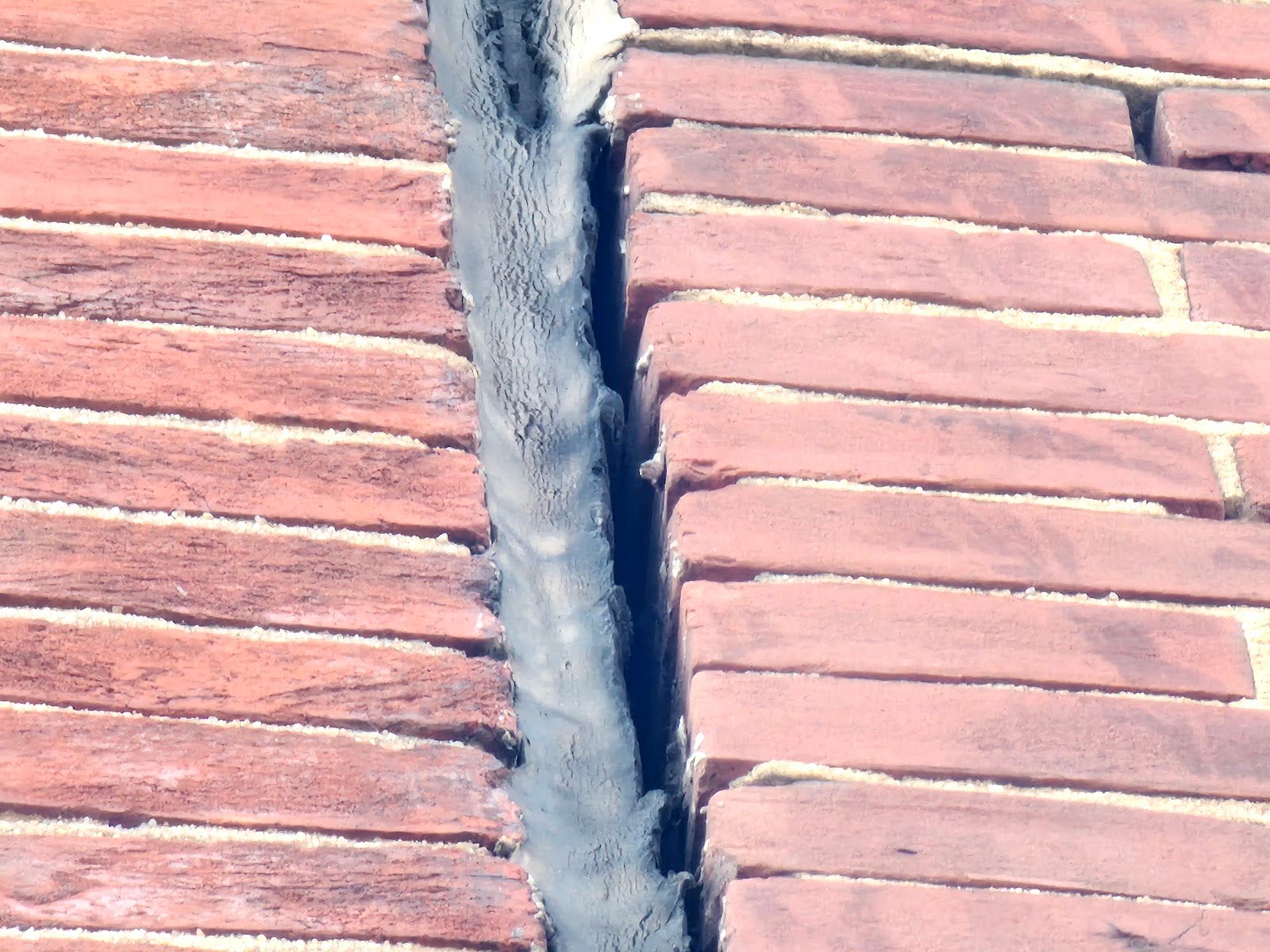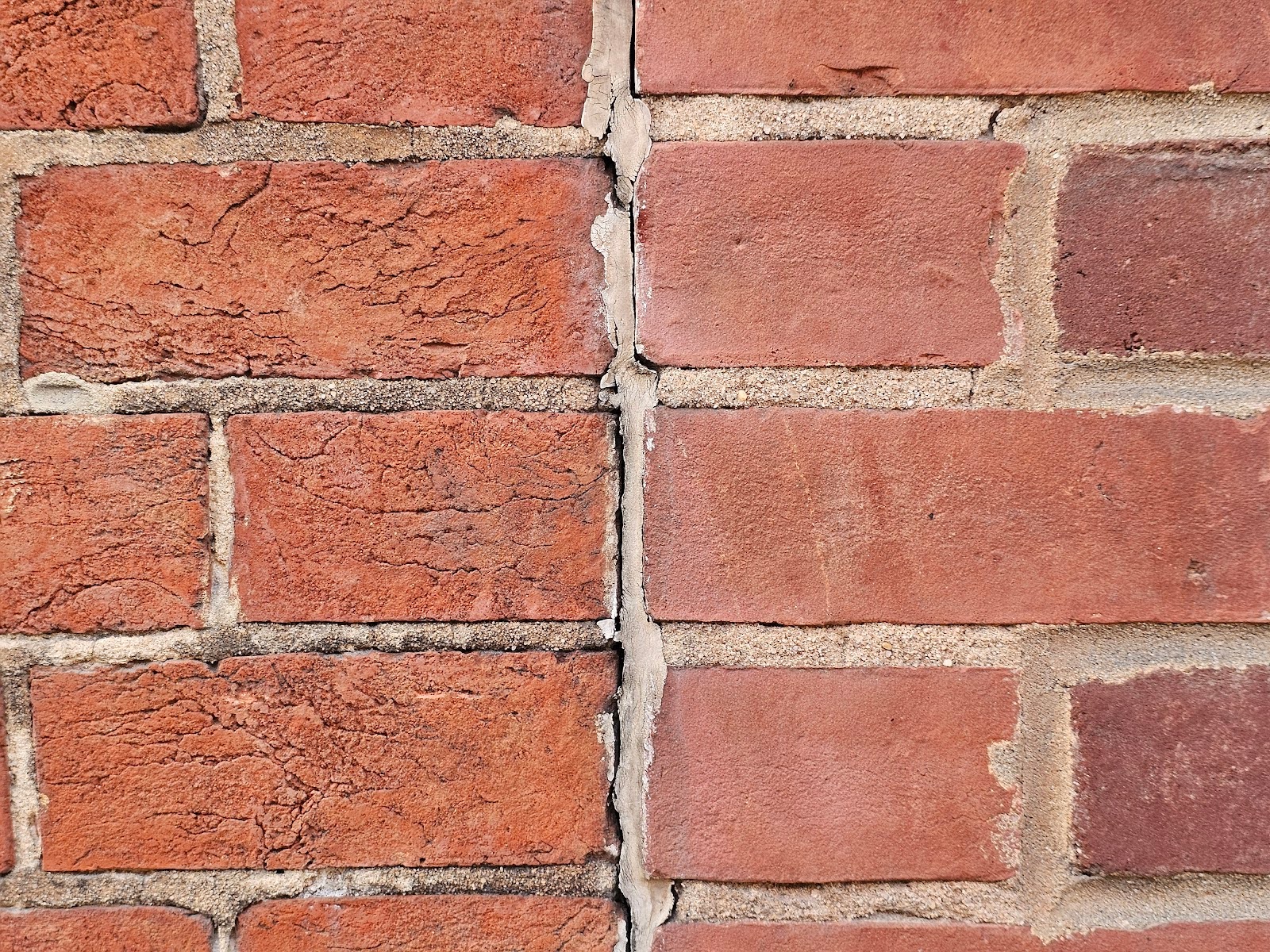Cold joint effects on building separation
This past week, we looked at a vertical joint between two different historic masonry constructions. Essentially, these two different walls were built at different times but set directly against one another. One of the sides of the construction has settled at a rate faster and or at to a degree more severe than the adjacent building which has led to the cold joint opening at the upper areas of the buildings.
Differential settlement happens when one part of a building, down at the base or footing of the building, sinks at a higher or faster rate than an adjacent part of the same building or even an adjacent addition or differing building as well. In those cases, when there is a joint that is tight, in the bottom, for example, it may become wider at the top. That’s happening here in this example.
In some of the areas in the photographs which we looked at last week, you could see that one side the joint, otherwise filled with sealant, had sealant still stuck at certain areas but at the alternate side, the sealant was still attached. Basically, the sealant had pulled away from one side for a length of a few inches and then the sealant was still attached to the other side but the gapping and areas of remaining sealant, zigzag upward vertically. It was like the different sides of the sealant were being drawn apart and the sealant where it remained in the middle was being stretched to its limits.
Even though the sealant had relatively decent adhesion, enough to stick to both sides to a degree, at least, while it was being pulled apart, it wasn’t good enough. The openings and gaps on the alternating side still led to the same problem. Water could simply enter in through those openings. Once water enters, both in the form of precipitation and or diverted rainwater from the rooftop, it causes a pretty significant problem. Once water get into those areas, it’s in a crevice or void area where it doesn’t receive much sunlight to dry out and it doesn’t have an easy pathway to drain away.

The picture below shows the highest part of the building, at this area where the sealant spans between the cold joint, between the two different building assemblies. As the buildings, or building sections in this case, have pulled away from one another, the base flashing at the roof of the lower building has also pulled away where it was interconnected under the counter flashing at the base of the taller building.
This particular detail is unfortunate because as water runs across that rooftop and or makes its way down the drip edge at the side of the building, now the edge of that drip edge is coincident with the center of the open joint. Water, as it’s directed off the edge of the side of the drip edge will now run down the face of that joint. With the voids and openings in the defunct or deteriorated sealant will now enter into the interstitial space between those portions of the wall.

While the picture above shows the top of that vertical joint, the picture below shows the bottom or base of that vertical joint. There’s a major difference. The upper portion has a significant space where the buildings have moved apart, yet like the knuckles of a hinge, the base of the wall has stayed relatively tight together. Nonetheless, there are the forces of differential settlement at play.
Even at the base of the wall because as you can see, there is hairline crack which still creates a problem, a smaller opening yet still a space where water can enter into the interstitial wall assembly. Also, a different approach has been used to seal that area of the joint, at this lower area. In the upper area, they used a sealant such as a gun applied type of sealant, but at the lower area, the joint or space has been filled with a more typical brick mortar.
The problem with using a brick mortar in a space like this, even if there aren’t issues of differential settlement, is that buildings or sections of buildings like this will have normal movements that can cause cracking. The flexibility associated with high performance sealants will generally allow some resiliency and flexibility to withstand those micro movements typical with the natural environmental impacts on a building.

As you look across the greater area of the facade between or shared by these two different sections of buildings, the cold joint is not highly visible at the base of the wall. Even though the rows of brickwork on both sides of the joint don’t line up perfectly, the distinction doesn’t jump right out at you, visually. When you look at the top of the wall though, the difference is significant.

Our company, Dupont Tuckpointing and Masonry, specializes in masonry restoration, historic brick repointing, and tuckpointing services in the Washington D.C. area. These buildings are uniquely historic, and their preservation requires skilled masons who are technically trained in the best practices and knowledge of proper restoration techniques.
We understand the significance of maintaining the architectural integrity of these historic structures, and our team of experienced professionals is dedicated to delivering exceptional craftsmanship. Whether you require masonry restoration, tuckpointing, or brick repointing services, we are here to help.
At Dupont Tuckpointing and Masonry, we take pride in our work and strive to ensure that every project is executed with the utmost care and attention to detail. We are committed to preserving the rich heritage of Washington D.C.’s built environment for generations to come.
If you have any questions or needs regarding masonry restoration, historic brick repointing, or tuckpointing services, please do not hesitate to reach out to us. We would be delighted to assist you and provide you with the expertise and quality workmanship that your historic property deserves.
You can reach us by telephone at (202) 796-7644 and you can reach us by email from the contact form on our website at https://duponttuckpointingmasonrydc.com/contact-us/.




